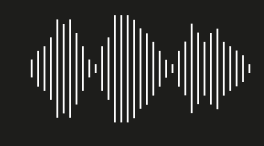How Do You Incorporate Meaning?
Gary Tomlinson, John Tresch, Jenna Sutela
Human evolution and its relationship to the cosmos has led to a world of symbolism, language, and gestures. In this way, meaning has become something utterly human, based on the corporeal capacities of human perception, while, at the same time, becoming vastly broader. That is, meaning’s continued production alongside biochemical coevolutionary processes that imbricate the human in ecological milieus has allowed it to incorporate into other forms of life.
Musicologist Gary Tomlinson explores the emergence of signs and how they produce meaning, content, representation, intentionality, and aboutness. He conceptualizes an algorithmic, transhuman approach to life based on the interpretative capacity of life and non-human lifeforms, natural selection, and niche construction. Historian of science John Tresch discusses a combinatorial understanding of the human as it is produced by algorithms that track and predict choices online. How do human life forms become manifest in “predictable selves” and what are the political implications? In her live performance nimiia vibié (2018), artist Jenna Sutela, accompanied by the flautist Shin-Joo Morgantini, uses machine-learning algorithms that interpret language patterns from extremophile bacteria to form an alien audiovisual poetry.
